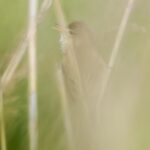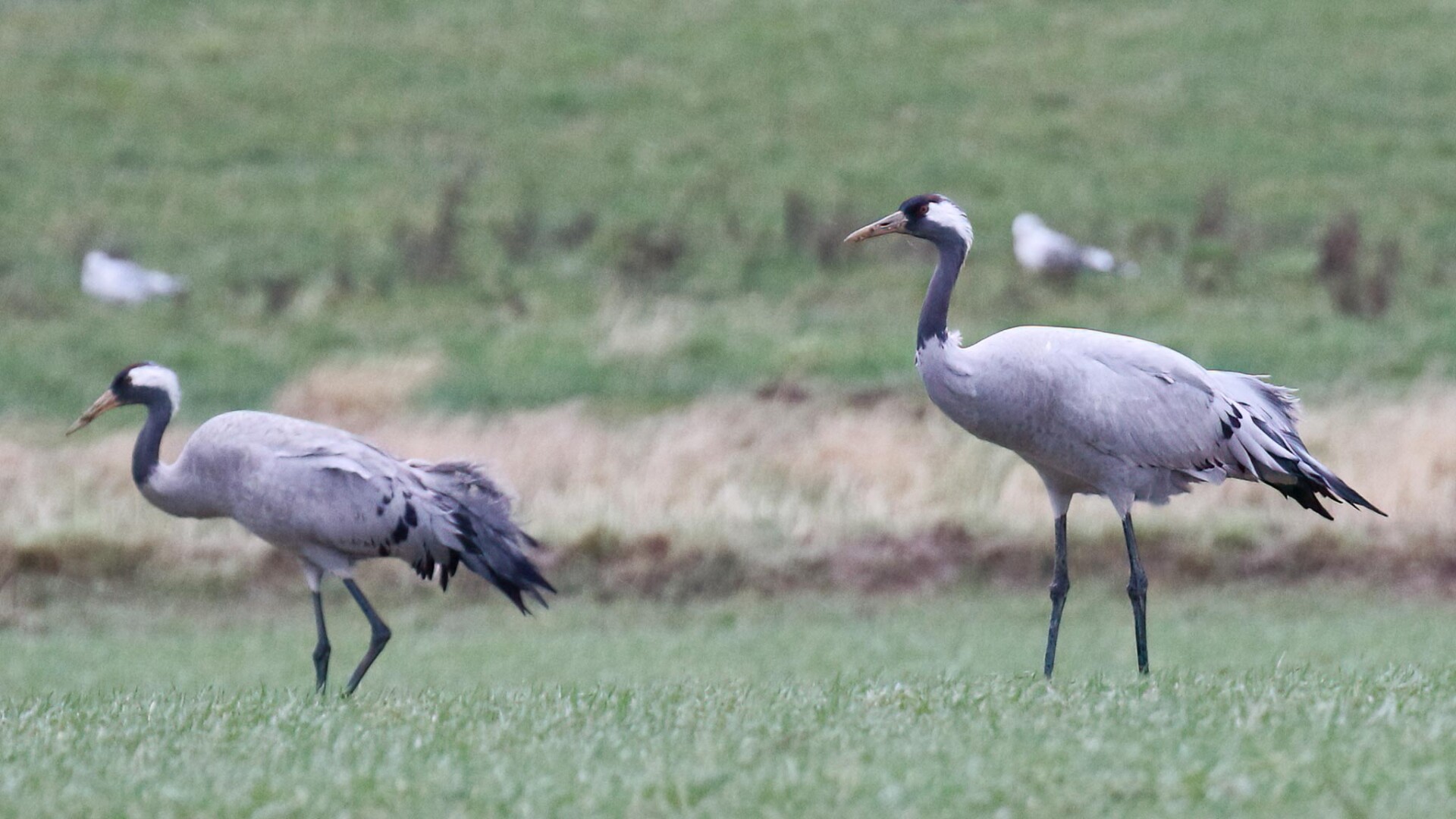I am conscious that I haven’t written any blog posts for several months now – COVID-19 has meant no tours have run since last October, with a succession of national lockdowns interspersed with ‘tiered’ regional restrictions which have meant it has not been possible to operate.
As we head into spring, hopefully there is finally light at the end of the tunnel. Following last week’s announcement by the Government, we are planning to restart tours on a limited basis from April 12th and then look to run a full programme from May 17th. If you might be interested in joining us, please check the website to see what we have planned or contact me directly.
In the meantime, this is what I have been up to, keeping busy over the last couple of months…
2021: Happy New Year
In Norfolk, we found ourselves put into Tier 4 from Boxing Day. Normally, my son and I would have a ‘big day’ on January 1st, trying to find as many species as possible up and down the coast to see in the New Year. With the restrictions in place, that wouldn’t be possible this year, but we did manage a couple of short trips out locally.
We drove down to the beach at Weybourne for a walk on New Year’s Day. Our journey there took us over Kelling Heath, where fortuitously a Waxwing was feeding on rosehips right next to the road. We stopped briefly to watch it – they have been in very short supply this winter, so it was a real bonus to be able to catch up with one so close to home today. One of everyone’s favourites, and a great way to start the year.
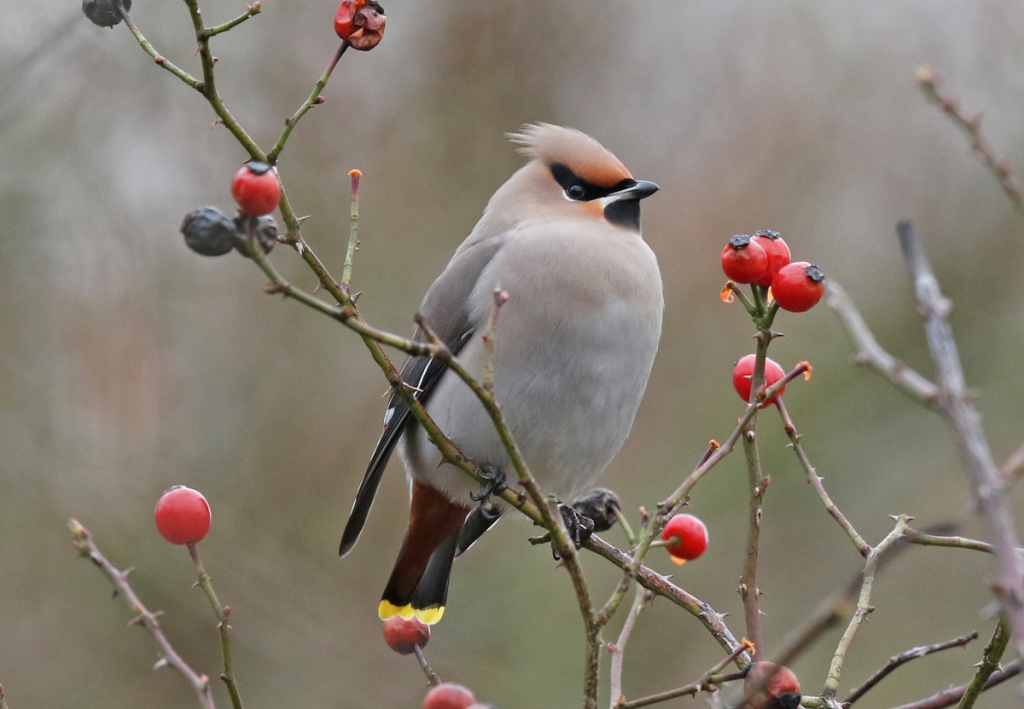
Continuing on down to Weybourne, we had only just walked up onto the beach when the lingering juvenile Iceland Gull flew up from the shingle in front of us. A scarce bird in Norfolk in most winter’s, and another good one to get 2021 underway. A walk along the beach didn’t produce much else, but the Iceland Gull patrolled up and down the shore past us a couple of times.
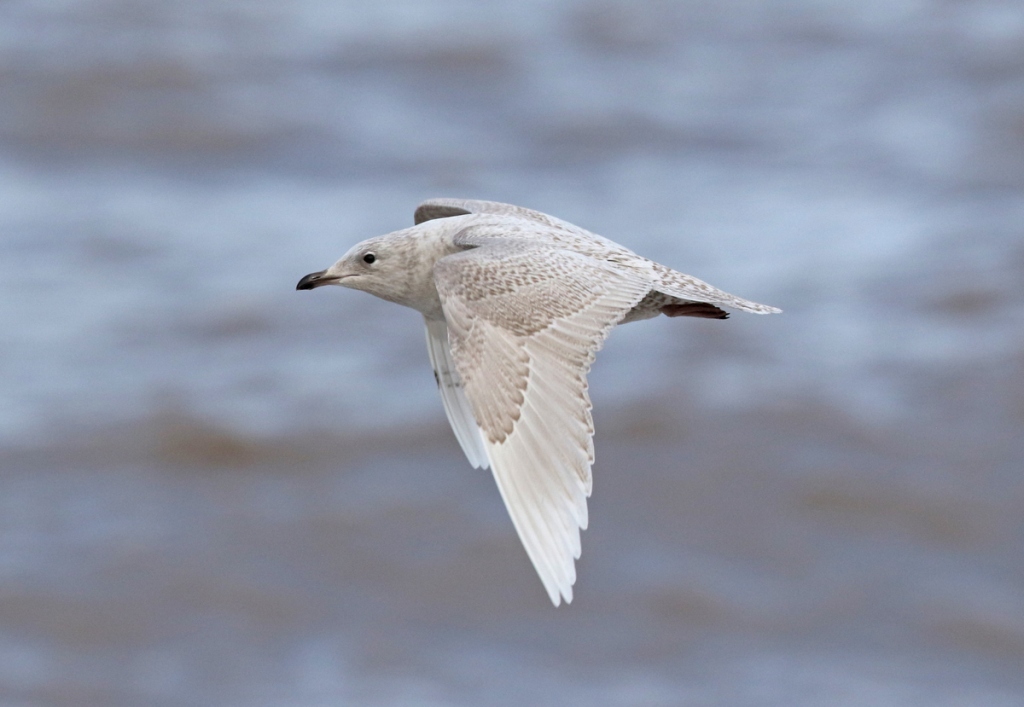
Driving back along the coast road, we stopped briefly half way down Beach Road at Cley. As we climbed up the West Bank, a Kingfisher was perched on the concrete sluice the other side. A lone Canada Goose was out on the grazing marshes, lots of Pintail were asleep on the brackish pools and the hoped for Barn Owl was picked up hunting in front of the Mill.
On Jan 2nd, we went for a walk at Holkham. Heading down through the trees in the park produced a selection of commoner woodland birds and the lake added a few ducks to the slowly growing year list. But the surprise of the day was finding six Cattle Egrets (or should that be ‘Deer Egrets’?!) in the park feeding in amongst the Fallow Deer.
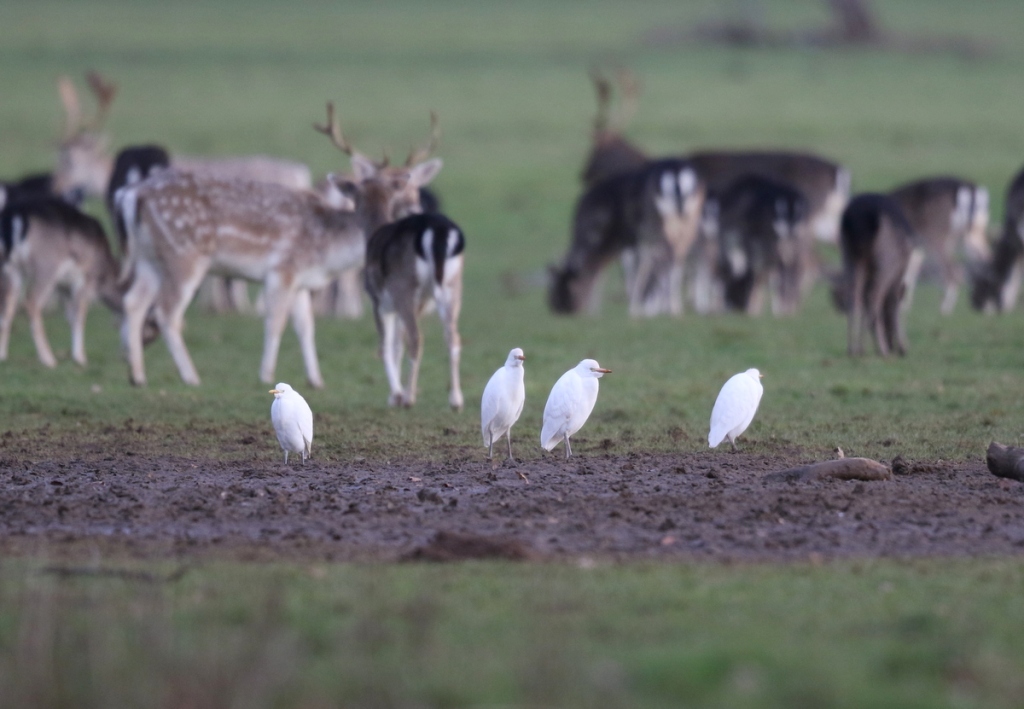
It was a nice gentle start to the 2021 birding year, but little did we realise that would be the end of it. On the evening of January 4th it was announced we were all going into a new National Lockdown the following day. That was that!
Staying Local
At first, staying local meant turning my attention to the garden and the surrounding fields. We are lucky with owls here, and regularly, early morning or late afternoon, one or two of our local Barn Owls could be found out hunting.
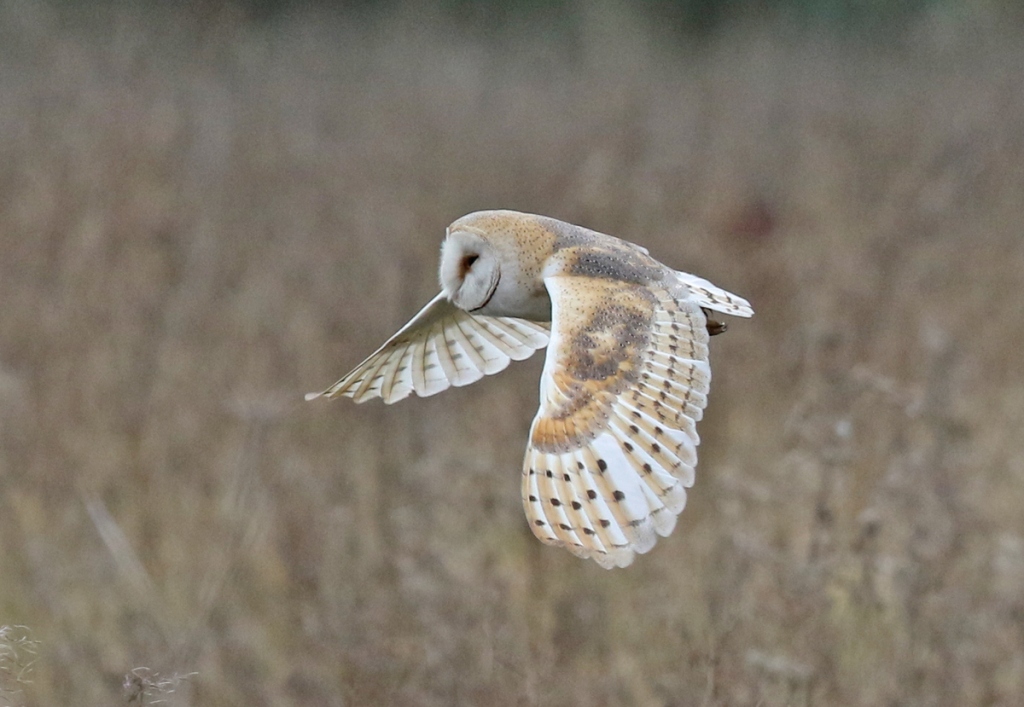
We also have a pair of Little Owls here. On sunny days, they like to perch up somewhere and warm themselves and this year one of them has sometimes used a holly tree outside the back door of the house, from where it watches us coming and going.
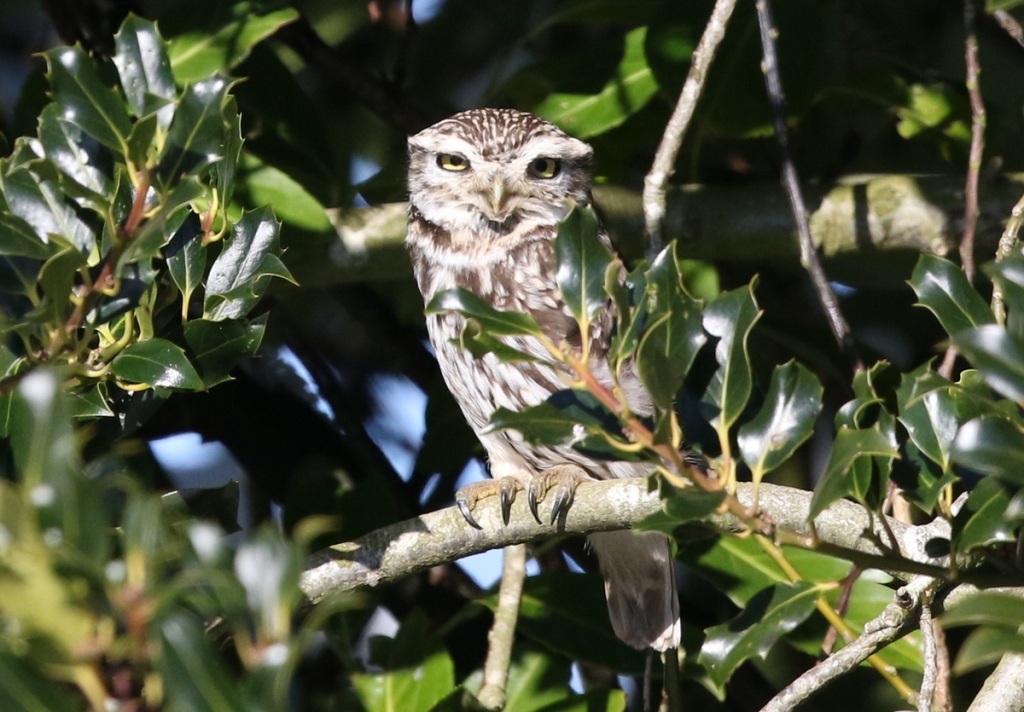
The garden has delivered some surprises this lockdown – as well as an occasional Grey Heron or a pair of Mallard, we often get one or two Teal drop in to the overgrown pond at the back of us here, but a Water Rail there on January 10th was more unexpected. However, possibilities in the immediate area are always going to be slightly limited and there are only so many times you can walk up and down the footpath here, particularly with the rest if the village using it, and the ground getting increasingly muddy.
Still within the local area, there are lots of woods and footpaths which I have never explored, so I set off on foot to see what I could find. The fields and hedgerows held small number of winter thrushes, Fieldfares and Redwings come here from Scandinavia for the winter.
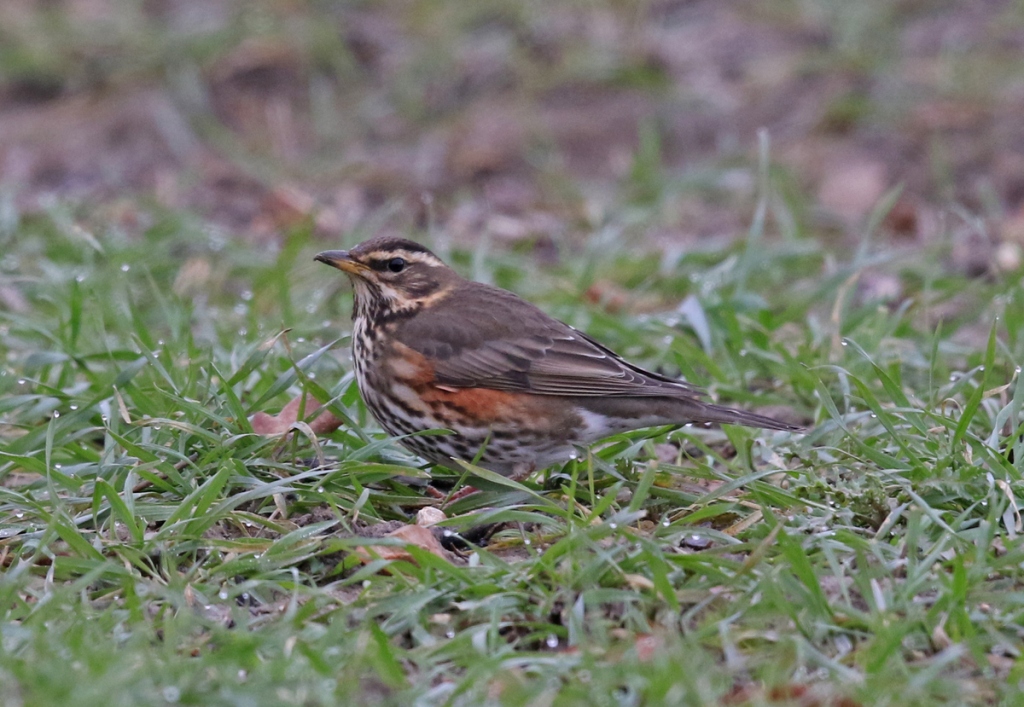
Some of the fields have game cover or wild bird seed mix strips along their edges, and one area in particular held impressive numbers of Bramblings, with a flock of at least 100 in one location. There were smaller numbers of Siskins and Lesser Redpolls around too, plus a few Common Crossbills in the conifer blocks.
The best find of early January were the Hawfinches. They used to breed in many of the local parks when I was a boy, but they have sadly declined to the point where they only seem to be regular now in the Brecks. Variable numbers also still come to the UK from the continent in winter, and I often wonder if birds could still be lingering in some of their traditional haunts, as they are surprisingly unobtrusive creatures for so big a finch. Still it was a big surprise out on one of my walks to see two Hawfinches fly in over the fields and land in some trees behind some houses on the edge of the village.
I encountered the Hawfinches regularly over the next couple of weeks, with a maximum of four on a couple of occasions, but mostly they were distant in the tops of the trees or flying over. Then on 18th Jan, I was walking along a track out of the woods and a lone Hawfinch flew up from the verge in front of me. It landed in some bare branches above my head, looking down at me, before flying back into the trees. Just a moment of luck – that was the only time I got close and I never did see one in the same spot again!
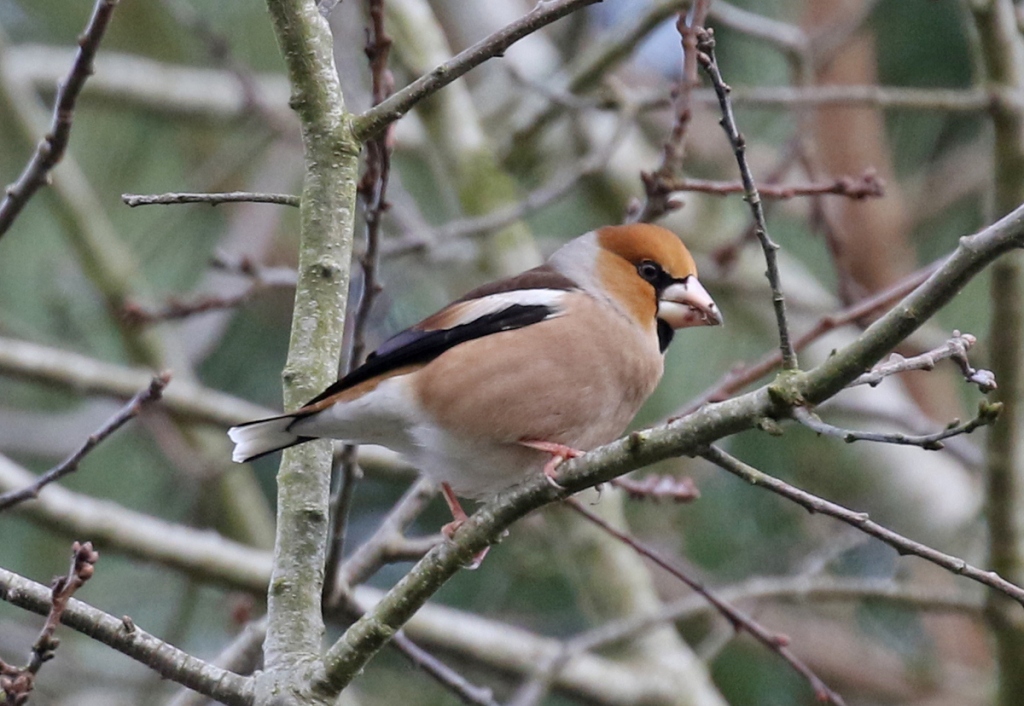
The other highlight locally were the Goshawks. Once confined to the Brecks in Norfolk, they finally seem to be spreading more widely, and lots of people seem to have found them locally to them across the county in the last couple years. A succession of lockdowns has probably helped, with people forced to explore closer to home. There seem to be very good numbers of juveniles around at the moment, presumably birds dispersing after a good breeding season last year. The best time to look for them is on sunny days from the turn of the year, when Goshawks can be found displaying – perfect timing for Lockdown 3.0!
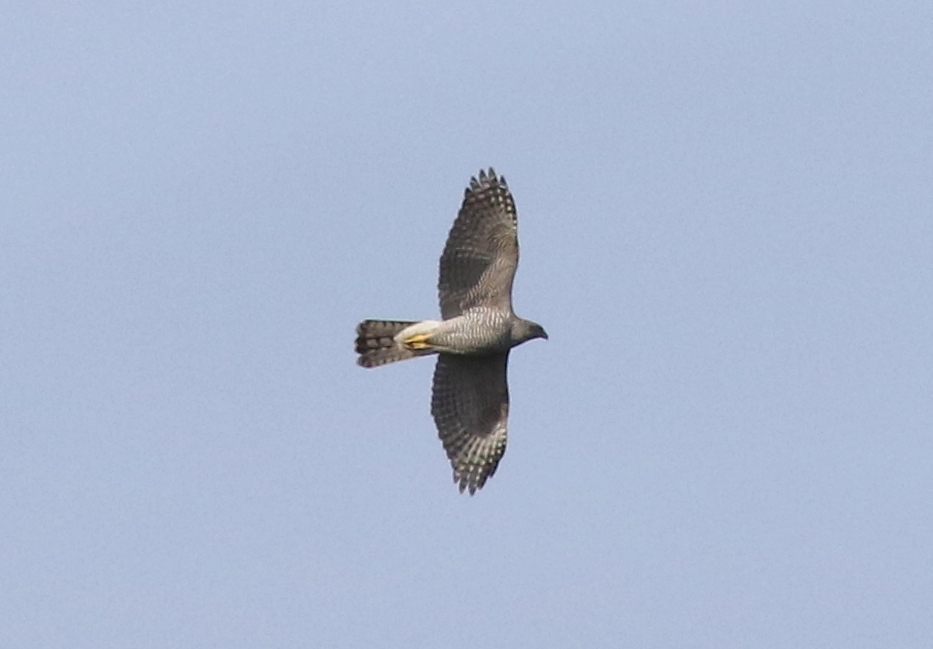
The little things matter in lockdown too. It got colder around the end of January and this seemed to stimulate a bit of movement. A female Stonechat took up residence on the fence around a field full of sheep, the first I have ever seen locally. Common enough on the coast in winter, and in some of the bigger river valleys in Norfolk, but rarer than hens’ teeth in the agricultural desert that is much of inland Norfolk.
A couple of milder days at the start of February lulled some creatures into a false sense that spring was imminent. A Peacock on my walk on 4th was my first butterfly of the year and my first Hoverfly (Eristalis tenax) appeared in the garden that afternoon. A drake Goosander flying over the woods was a bit of a surprise late one afternoon, as was a Marsh Harrier flying high north towards the coast at dusk on another evening.
Then the snow arrived on 8th February and over the next couple of days, we found ourselves with up to a foot of lying snow, the most I have seen here for many years. Where the hedges have been grubbed out along the road out of the village and the verge had been helpfully mown flatter than a billiard table just the week before, the snow was drifting in the wind too. So that day was a stay at home day.
It was a surprise to find one of the local Barn Owls out hunting in the worst of the snow and wind that morning, before it then more sensibly settled onto a post on the edge of the meadow where it was more sheltered to see if it could hear something in the grass below. Obviously already hungry and with a problem with one of its eyes, it didn’t seem like it would survive a prolonged period of snow (spoiler alert: somehow it did and it is still here!).
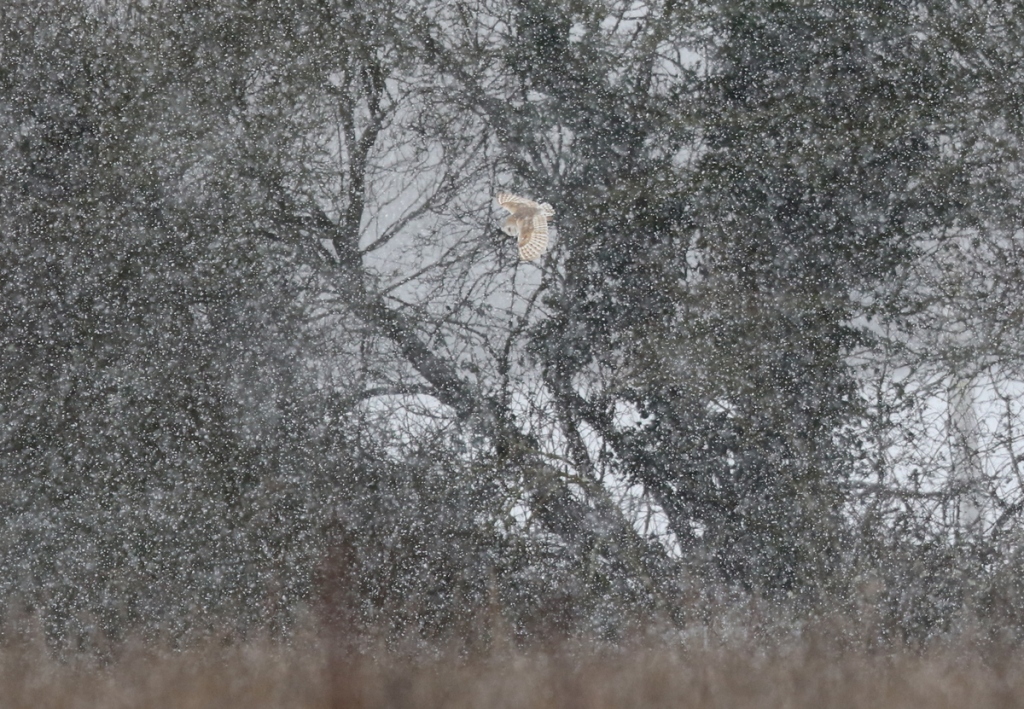
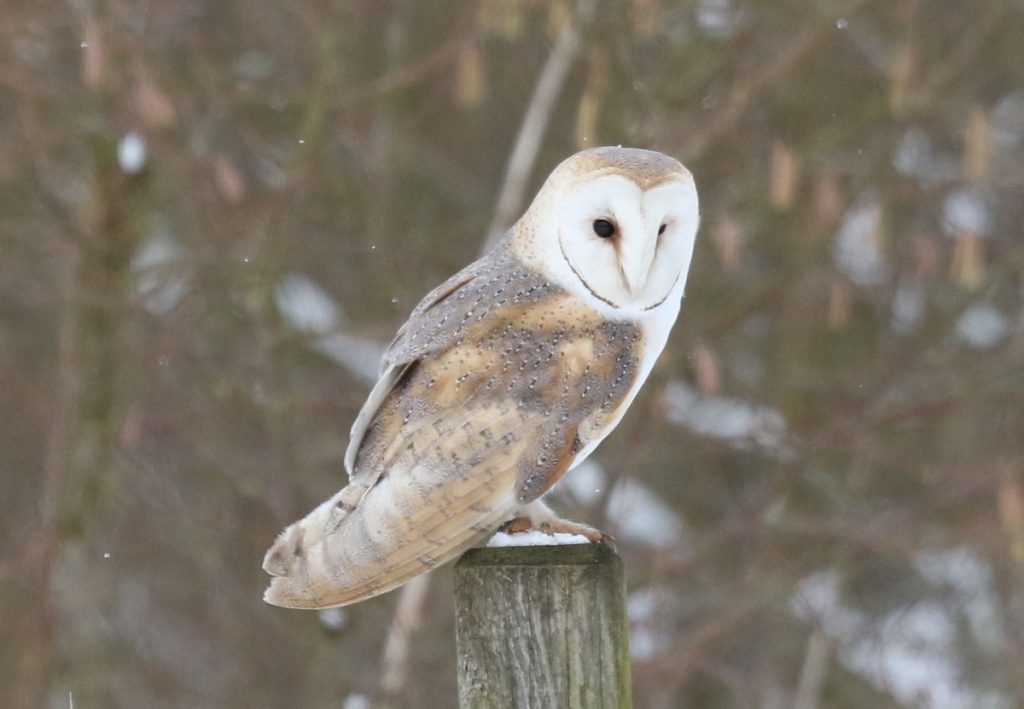
There was an arrival of Woodcock on the coast before and during the snow, presumably fleeing even colder weather on the continent. People close to the coast reported big numbers – on the beach, in coastal scrub and fields and even on the lawn in some lucky peoples’ gardens! This arrival didn’t seem to percolate this far inland though. We always have a few Woodcock which spend the winter in the woods here and numbers seemed to be much as usual.
Woodcock are normally very nocturnal, and seldom seen during the day unless flushed, but when they are struggling to feed and hungry in snowy or icy conditions, they can sometimes be found out in the middle of the day. Despite searching all the places where I have seen Woodcock locally in the past, the most I could find in the snow here were birds flying past or deep in the trees which flew off before I even saw them. We have had them on the lawn here before, in the snow, but no such luck this year.
There were also reports of large numbers of Common Snipe and smaller number of Jack Snipe elsewhere, displaced by the snow. We always have two or three Green Sandpipers which spend the winter in farm ditches locally, and I had regularly seen one or two on my walks prior to the snow, but otherwise we have few wet areas suitable for waders. It was not a great surprise therefore that I had failed to even see a single Common Snipe so far this year. So when a Common Snipe was reported by one of the other birders in the village from the ditch where the Green Sandpipers could often be found, I was very pleased to be able to catch up with it. The next day, I then flushed two Common Snipe from the old farm pond behind the house – just like buses!
Given the lack of snipe here, I thought a Common Snipe would be the best I could hope for. It was therefore an even bigger surprise the following day, when I stopped on my daily walk to scan the ditch where the Common Snipe was still feeding, and as I looked further back I noticed some bright golden mantle stripes bobbing up and down. A Jack Snipe! The first I have ever seen locally.
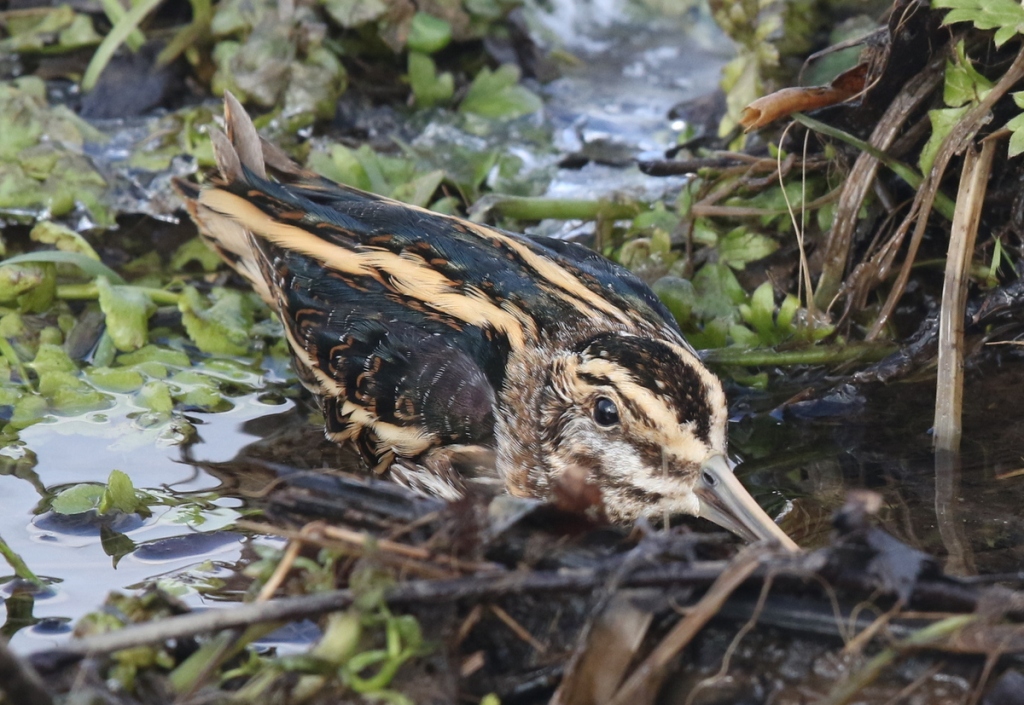
Having scoured the woods in the local area for a daytime-feeding Woodcock, I received a message one day from one of the other birders in the village that he had seen one early that morning on the edge of the small copse directly across the lane from our garden! I had looked in there most mornings, on my way out for a walk, and had not seen anything. Surely it wouldn’t still be there now, but I had to have a quick look just in case.
There was no sign of it where it had been earlier, but after walking up and down on the edge of the copse several times, I noticed a rusty brown lump not far into the trees. The Woodcock! It was out in an open patch, on the ice which had been a large puddle, presumably trying to feed in the damp edges just above, where the lying snow was less deep. It froze when it saw me, presumably not realising that its wonderful cryptic plumage did not provide much camouflage against a background of white snow!
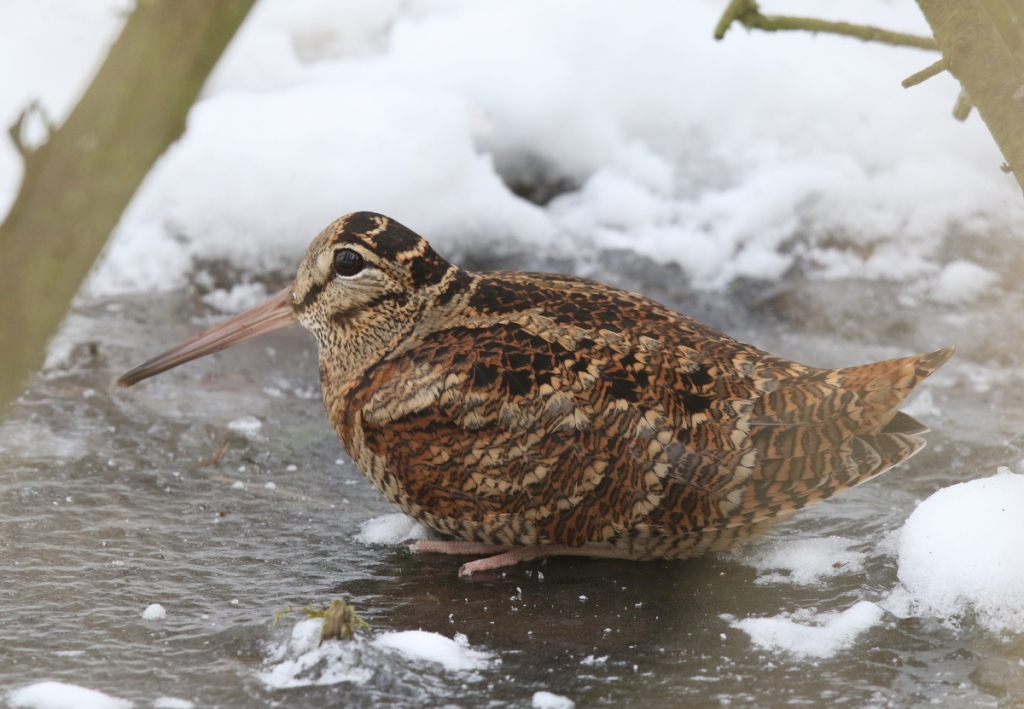
After a week, the weather changed and the snow melted very quickly. The waders – Woodcock, Jack Snipe, Common Snipe – all disappeared, the snipe not helped by the rapid rise in water levels in the ditches over the next few days. Finally able to get out further afield again, it became clear that other things had been forced to move by the snow too – there was no sign of the Hawfinches or Stonechat now, and numbers of Bramblings in the fields seemed to have dropped too.
For the last week or so of February, temperatures then rose so that for a while it felt like spring. The insects responded quickly, with my first Common Wasp of the year on on 20th and several Honey Bees gathering pollen around the snowdrops on 21st. Two Brimstone butterflies were out in the sunshine in the woods on 24th and over the following days the bee list expanded with Early and Buff-tailed Bumblebees, and Yellow-legged (Andrena flavipes) and Gwynne’s Mining Bees (A. bicolor) all in the garden.

There had already been several reports of Common Cranes on the move elsewhere over the previous few days, but that is another species we struggle with here. They wander from the Broads in early spring but tend to follow the coast or the major river valleys, and seldom seem to wander over the open fields in the agricultural middle of the county. I was really missing not having seen them in the Broads this year, one of the highlights of Jan and Feb for me. I was therefore delighted when I was out on my daily walk on 26th February in the sunshine and heard bugling high overhead. I turned to see a small group of five Common Cranes circling in the sun. After a few seconds they broke off and continued on their way west.
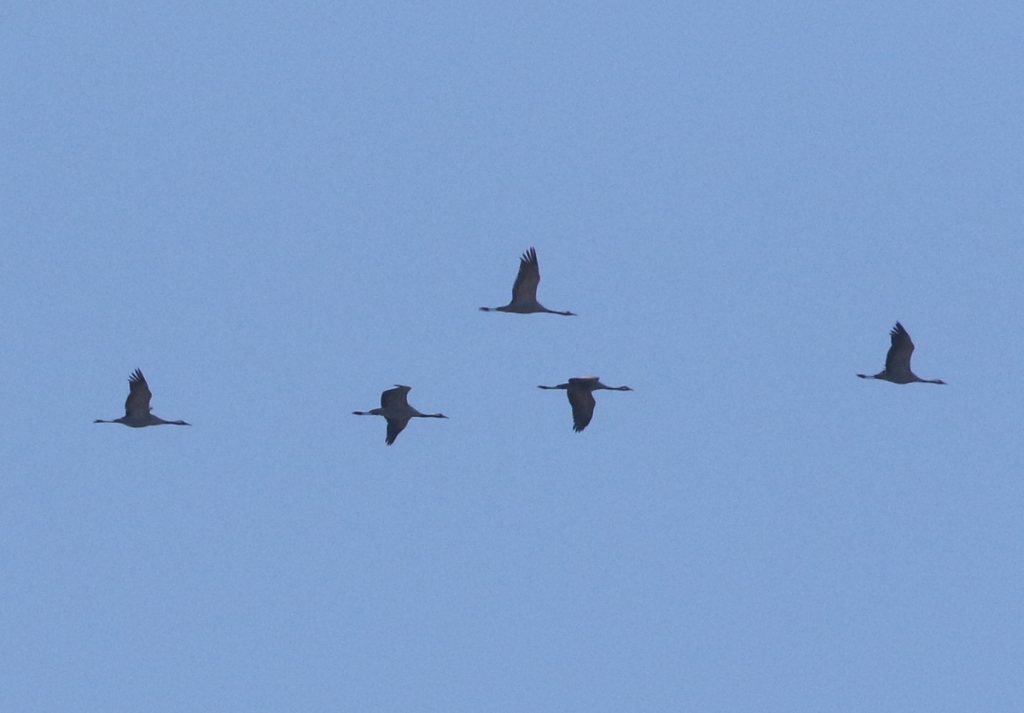
I was pleased enough to see them, but when I got home later I noticed a message on the newswires that the Cranes had actually flown over my village a few minutes before I saw them. I hope they didn’t go over my house – it is still one I need for my garden list!
It remained warm right to the end of the month. A Chiffchaff singing in the garden on 27th February may be our earliest ever here, and seemed to be part of quite a widespread arrival across the county that day. With a sunny morning on 28th, it felt like a day for raptors so I stood on the lawn for a while scanning as the local Buzzards started to circle up. I probably saw upwards of 15 Common Buzzards and four Sparrowhawks, but nothing more exotic.
I left my scope on the lawn and walked out through the gap in the tall hedge at the back, onto the footpath beyond, to scan the fields to the south. As I emerged, I noticed a pale shape hovering over the rough grass field just beyond the hedge. It looked the wrong shape for one of the Barn Owls which usually like to hunt over there, before it turned and the penny dropped. It was a cracking silvery-grey male Hen Harrier! And for once I didn’t have a camera with me.
I ran back into the house and grabbed one, but by the time I got back out, the Hen Harrier was working its way down the field away from me, into the sun. I set off down along the footpath, and for a few seconds when it got to the far end of the field it looked like it was going to work its way back again. But then it disappeared round behind the trees and was gone. I have only ever seen one Hen Harrier here before, also a male, back in early 2011. It just goes to show what you can sometimes find when you are forced to stay home. As I walked back into the house, a Peacock butterfly was basking on the steps in the sun.

The weather has turned cooler again at the moment. The last three days have been dull, grey, foggy and have given me a chance to sit down in the office and write this. But it finally feels like spring is just around the corner and I cannot wait to get out again and explore the rest of Norfolk in just a few weeks time.
